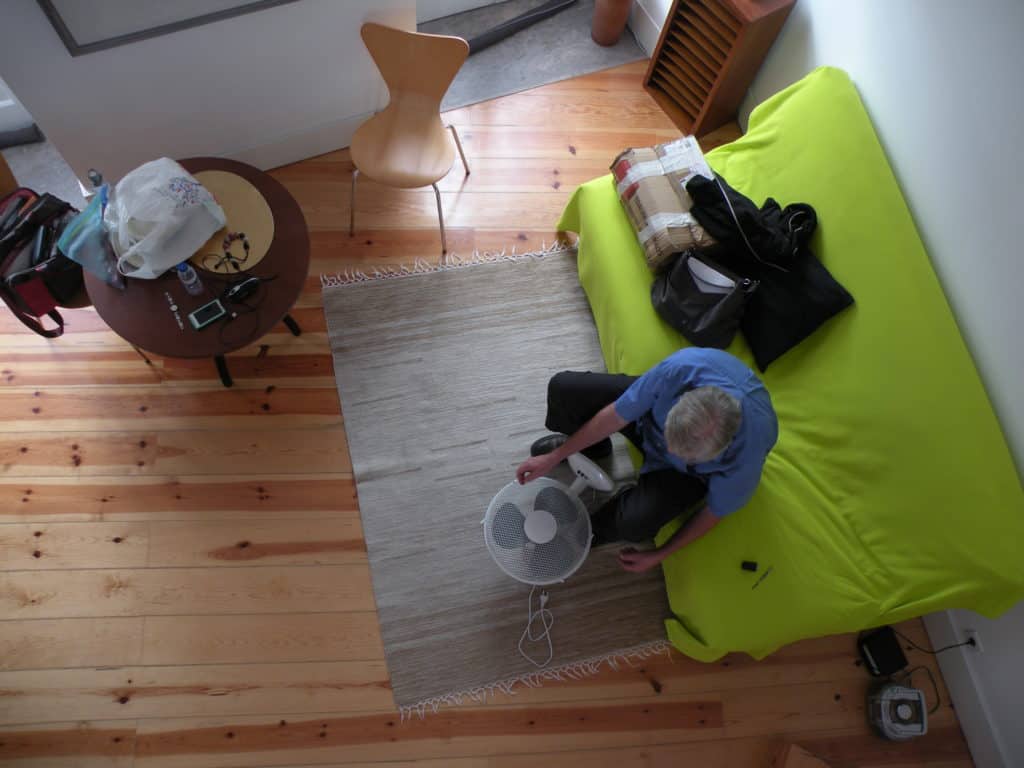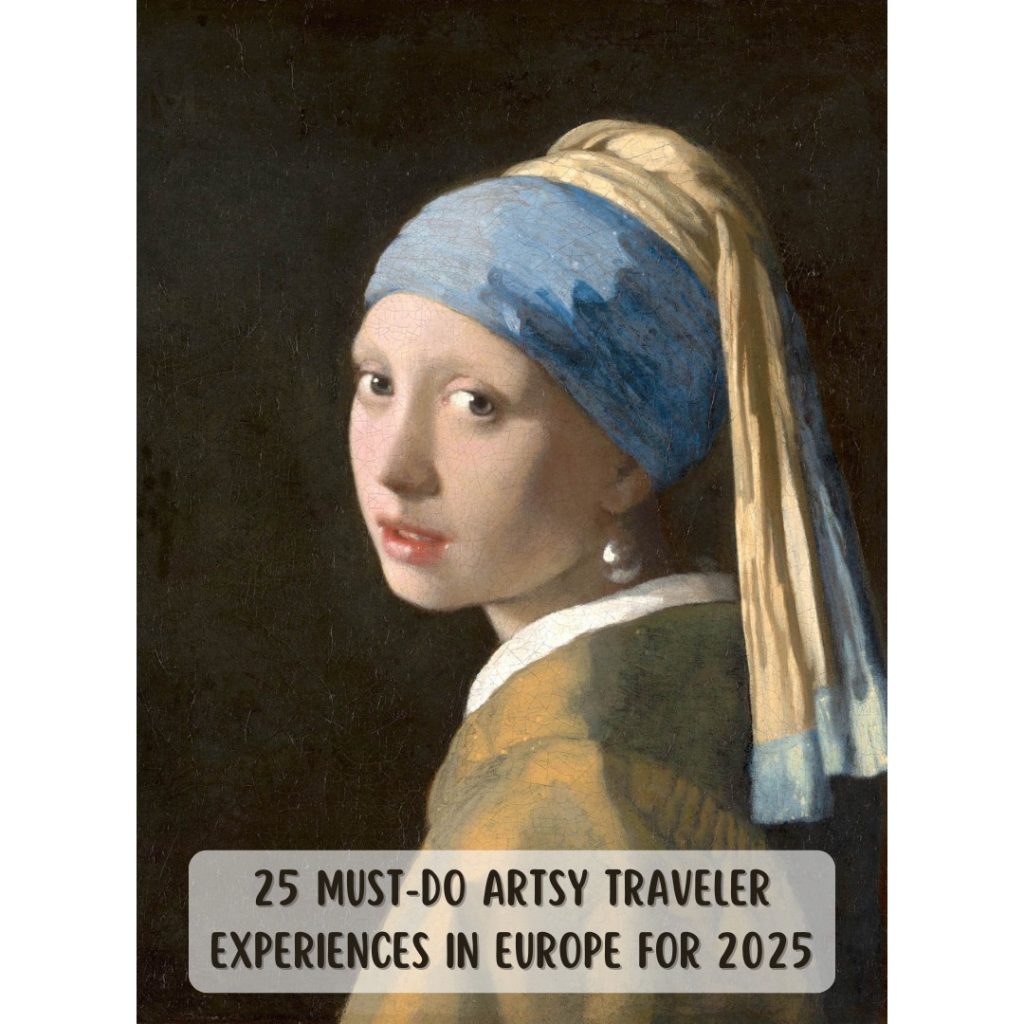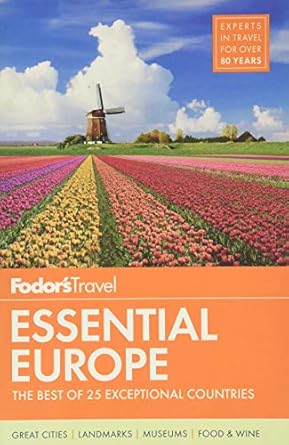How to Plan Your European Trip in Nine Easy Steps
Artsy Traveler contains affiliate links for products and services I personally use and can happily recommend. As an Amazon Associate, I earn from qualifying purchases. Please read the Disclosure for more information. If you make a purchase through these links, at no additional cost to you, Artsy Traveler earns a small commission. Thank you!
Nine steps? Don’t let the number worry you. Each step in the Europe travel planning process flows naturally into the next, and several steps overlap.
Work on creating an itinerary for a perfect European trip with the same spirit of adventure and curiosity you will bring to the trip itself.
Over the years, I’ve developed a trip planning system that I return to again and again.

Your first thing to do (even before Step 1!) is to decide which countries you want to visit.
Changing your mind is never off the table, but once you have some idea about where you want to go, you’re ready to get cracking with creating your itinerary.
Ready? Let’s plan!
Step 1: Determine Your Time and Travel Budget
How much time and money do you have for the trip you want to take? Calculate total travel expenses of about €135-225 per person per day to travel in Europe, not including airfare and transportation costs.
I provide a general cost breakdown below. These costs presume you’re on the go most days. If you home-base in a destination for a week or more, your per-day costs will be lower, depending on your transportation needs and the price of your accommodation.
Accommodation Costs
Budget about €150-300 per night for 2 people. I wish it was less (it used to be!) but it’s not anymore, especially in western Europe.
Within this budget, your accommodation costs will likely vary widely, depending on where you’re staying and how much comfort you want to pay for. Count on closer to €400-400 per night in cities or for resort properties and €90-110 per night in the countryside for small guest houses.
Apartments are a bargain if you’re traveling with three or more people. For two people, apartments work out to about the same price as hotels. However, you get much more room, you can cook some of your meals (thereby saving on restaurants), and you get the experience of living like a local.

For advice about choosing accommodations, read Six Tips for Making Awesome Accommodation Choices in Europe.
Food Costs
Budget at least €45 per person per day. Again, this amount can vary a great deal. Save money by renting apartments and cooking some of your meals. We generally spend about €60 per person per day for three meals when we’re on the road because we eat in restaurants more often than we do when we’re home-basing and eating in.
Sightseeing Costs
This cost varies from place to place. In big cities, budget at least €45 per person per day for museums. If the city has a lot of interesting museums and other sights, you’ll spend more. When you’re staying put and enjoying the scenery, you’ll spend less.
One way to save money is to buy a museum pass, city pass, or a combination. Most major European cities have several options to choose from. Match the time you have available with what you want to see and then determine if you’ll get your money’s worth out of any of the passes on offer.
Total Basic Costs
At about €270 per day for two people traveling together, a one-month trip to Europe costs close to €8,500, not including airfare and other transportation costs. But let’s be real. You’ll likely pay closer to €13,000 for your trip once the smoke clears.
Traveling is not cheap these days.
On the up side, traveling in eastern Europe is less expensive than in western Europe, and country stays will cost less than city stays. Tweak your destinations according to your budget.
Other ways to cut costs include staying in budget hotels, rarely eating out, and doing a walking or biking holiday instead of renting a car and taking trains.
Transportation Costs
I don’t include transportation costs in my estimated per-person-per-day calculation because these costs vary so much depending on your transportation needs.
Following are guidelines about transportation costs depending on the type of transportation you choose.
Car Rental & Gas
Renting a car makes sense for two or more people traveling together. I estimate about €90/day for car rental and another €45/day for gas when you’re on the road doing long point-to-point drives.
On extended driving trips across Europe, gas costs skyrocket, so make sure to factor estimated costs into your budget. Also factor in costs for toll routes that can range from €10-50 per day, depending on where you’re driving and for how long.
Gas costs vary across the continent but figure on spending about €1.70/liter, on average.
Rail Pass
Rail passes might make sense if you’re planning to travel long distances across several European countries; for example, from Stockholm to Rome. Pass costs vary depending upon the number of days you travel within a given period, the class of travel you choose, and even your age.

For example, a Eurail Global pass good for five travel days in one month in a 2nd class train car will cost a 60+ traveler $383 USD. Note I quoted this price in dollars because you must purchase your pass before you arrive in Europe. Find out more on the Eurail website.
Before you purchase a pass, check the countries included and calculate costs.
Use the Rail Europe site to check costs for individual trips and then compare the total to the price of the pass. Bear in mind that pass holders are often required to purchase seat reservations separately.
Sometimes (actually, very often), flying between destinations is faster and less expensive, although your carbon footprint is greater.
Flight Costs
I use Cheapo Air to check flights and to purchase my airline tickets. Their prices often beat those of their competitors.
Departing from the west coast of Canada, we can count on a flight to Europe costing around $1,500 CAD for an open-jaw ticket. On top of the basic cost, we pay for extra baggage if we’re taking an exhibition of Gregg’s paintings to Europe, and we always splash out for extra leg room.
Enjoying this post? Subscribe to Artsy Traveler to Receive Valuable Travel Tips and Your FREE Guide: 25 Must-Do Artsy Traveler Experiences in Europe for 2025

Comfort over cost is my motto! (within reason, of course).
Vacation Packages
Research vacation packages available through companies such as Expedia and Flight Center. You may save money by bundling your airfare, car rental, and accommodation costs.
Vacation packages are a good option when you’re going to one or two destinations for a relatively short time (for example, a two-week vacation in Italy).
Step 2: Select Your Travel Mode
You have two choices—escorted tour or independent travel. If you choose independent travel, consider purchasing the occasional day tour. You can relax and enjoy the attractions without the headaches of navigating.
I have traveled on guided tours and independently, and both methods have benefits and drawbacks.
The remaining steps relate primarily to independent travel.
Step 3: Set Up Your Itinerary
Once you’ve determined how much time and budget you have and you’ve chosen to travel independently, the real fun begins!
Launch Microsoft Excel, Google Sheets on your Google drive, or the spreadsheet app of your choice and set up your itinerary.
In the first column, enter the start date for the trip and then add each date of the trip’s duration on subsequent lines.
TIP: Set the format for each date so that the day of the week (Monday, Tuesday) is displayed to help you when you start filling in information about events, transportation connections, and day tours. Travel on Sundays can be limiting if you’re planning to use public transit, or you may discover that the museum you want to see is closed on the day you’ve allocated to visit.
Add headings for Destination, Transportation, Activity/Event, Accommodation, and Cost.
The start and end dates may shift when you start looking into flight options, but your goal at this point is to create a ‘big picture’ view of the trip.
Enter as many costs as possible as you create your itinerary. Set up the spreadsheet to calculate totals. I often add columns for costs incurred each day; for example, Accommodation Cost, Transportation Cost, Event Tickets, etc.
Step 4: Choose Your Destinations
For me, this step is the most challenging and the most satisfying of the planning process. How to figure out where to go and what to see?
Head first to the library or go online to find guidebooks about the destinations you’re considering. Also explore the posts and pages on the Artsy Traveler website and search for destination ideas on the Web.
Enter search terms such as “what to see in London” or “itineraries for Scandinavia” and then start surfing. Over the course of several days, a picture starts to emerge of the main sights and points of interest in an area.
Start filling in the itinerary spreadsheet with your preferred destinations. This phase of trip planning is a lot of fun because you’re discovering new ideas and letting your imagination run free.
For Gregg and me, part of the decision about where to travel is made for us because Gregg is exhibiting his artwork (see My Story) in a particular location. We plan the trip around the exhibition location and dates.
Step 5: Find Events, Exhibitions & Tours
Once you know where you want to go, search for information about what’s on. This step puts the ‘artsy’ into artsy traveling.
For example, on a trip to England, I wanted to see a play at Stratford-upon-Avon. When I check the Royal Shakespeare Company website, I discover that I can’t see the play I want to see on the date I’ve allocated for Stratford.
Back to the drawing board! I rejig my itinerary until finally I can see everything I want to see and catch a performance of Richard III!
Find out what’s happening in the locations you’re visiting using search terms such as “concerts in Vienna”, “what’s happening in Amsterdam,” “exhibitions in Paris”, etc.
Also visit the websites for specific institutions, such as the Uffizi, the Louvre, or the Rijksmuseum. To find concerts, check the websites of concert venues, such as the Royal Albert Hall, the Berlin Philharmonic, and so on.

If you’re visiting London, check the theater listings and choose the plays and musicals you want to see. By the way, theater in London is both fantastic and a bargain, especially compared to New York.
Every time I visit London, I set aside time to attend as many performances as my schedule will allow. I can often get good deals by going to the theater the day before the performance to see what seats are available.
Step 6: Calculate Transportation Needs
Flights
Your first job, presuming you’re traveling to Europe from elsewhere, is to determine which city you’ll land in and which you’ll leave from.
I’m a big fan of the open-jaw itinerary – that is, flying into one city and flying home from another city.
You save travel time between cities and cover more ground. We generally fly into Amsterdam and then fly home from somewhere in the south, such as Nice or Portugal. The cost of open-jaw tickets is surprisingly reasonable, often not much more than the cost of a regular return ticket.
SkyScanner offers a wide range of open-jaw flights and cheap flights. Booking an open-jaw flight is easy. Just click the Multi-City option when you enter your departure cities.
Once you’ve chosen your arrival and departure cities, you need to determine how you plan to get around.
Car Rental
If you plan to drive in Europe, your selection of an open-jaw flight will depend on whether you’re able to purchase an open-jaw car rental.
You’ll pay a premium to drop off the car in a different location from where you picked it up. Do the math to determine if the extra cost is worth it, considering the gas and accommodation costs required to drive back to where you picked up the car. We usually find that the one-way stipend is much less than the cost of taking an additional few days to drive back to our starting point.
If you’ve planned your itinerary as a circle tour, you’ll pick up and drop off your car in the same location, thereby saving money.
To help you plan your car rental needs, check the car rental sites like Europcar and AutoEurope.
Rail Travel
Your best resources for train travel are the Rail Europe and UK Rail websites. Enter your start and end cities to find out schedules, durations, and costs. Note that these sites only allow you to view tickets within a six-month time frame, so if you’re doing your planning in January for travel in August, enter dates in May or June to get some rough data to work with as you build your itinerary.
The big decision when it comes to training it around Europe is whether to buy a pass or pay for point-to-point tickets. Which choice is better depends on how far you plan to travel and for what duration. If you plan to travel from Paris to Berlin to Rome to Madrid in a one-month period, a train pass likely makes sense.
As mentioned above, Eurail passes must be purchased before you leave for Europe. Find out more on the Eurail website.
If you’re home-basing in Siena and planning to use busses and local trains to explore the area, you don’t need a train pass.
Make use of the trip planners on the train websites to calculate costs for point-to-point tickets, then compare them to the cost of a rail pass.
For a great analysis of rail passes vs point-to-point tickets, check out this article by Rick Steves.
Ferries
Check ferry fares and times if your itinerary takes you over the water, for example, from Italy to Greece. Confirm when and from where the ferries sail and enter the options into your itinerary.

Day Tours
Check guidebooks and the Web for information about day tours in the destinations you’re visiting. When I travel solo, I usually travel by public transport which means touring the countryside can be challenging. My solution is to train it to a central location and then purchase a day tour that takes me into the countryside. I always opt for small group tours and have yet to be disappointed.
You’ll want to ensure that the day tour you’ve chosen is available on the day you want. If not, keep revising your itinerary!
This process is not done in a day, that’s for sure.
Step 7: Revise and Replace
How long you spend on Step 7 depends on the information you discovered during Steps 5 and 6. I’ve been known to spend a few weeks jigging and rejigging an itinerary until finally I’m satisfied that I’m seeing the maximum number of concerts, theater performances, art exhibitions, etc., and visiting as many places as I comfortably can in the time available.
Err on the side of spending more time in a destination rather than less. Avoid creating an itinerary that has you on the move every day. That pace gets extremely tiring after just a few days.
Plan to spend at least two nights in a destination – preferably three – to settle in and really get to know the area. And make sure you build in time for relaxing. When I’m in a bit city, I often return to my hotel in the afternoon for a restorative nap.
Step 8: Book Accommodations
Once I’ve more or less set my itinerary, I’m ready to start checking and booking accommodations. I never consider my itinerary completely set until I’m home from my trip! I frequently change the itinerary during a trip after learning about new exhibitions and events or meeting new people.
Use a booking agency, such as booking.com, to find and book your accommodations and select the Free Cancellation option. You can always return to the site closer to your trip time and change the booking to the cheaper ‘no cancellation’ option. Your goal at this stage is to secure places to lay your head. Hotels and apartments book up fast in Europe.
Over the months leading up to a trip, I book and unbook accommodation until I’m sure I’m getting the best pillow bangs for my euros.
Step 9: Book Transportation
If your transportation options don’t allow free cancelations, you’ll need to wait until you’re 100% sure of your dates before booking.
However, typically, the sooner you book your flights, the better the deals, so don’t wait too long. You can also save on car rentals by booking early. Some car rental companies allow you to cancel your reservation right up to the day before.
We had to do this in Spain once. We were scheduled to pick up our car at the crack of dawn in Madrid and drive for six hours to Cordoba. Unfortunately, both of us had come down with nasty colds, and the thought of driving for that long was not a pleasant one.
I was able to cancel our car reservation without penalty hours before we were to pick up the car, and then purchase train tickets that whisked us south. The other people on the train may not have appreciated the hacking and coughing, but at least we could doze off before arriving in Cordoba.
You can purchase train passes at any time prior to your departure. However, you can only buy point-to-point tickets within three to six months of your travel date.
Complete Your Itinerary
In the weeks before your trip, fine-tune your itinerary so it becomes your personal guidebook as you travel around Europe. Enter every possible detail, including contact information for all your hotels, information about your car rental and train trips, performance times for events, etc.
Format the itinerary so it’s easy to read and then print a few copies.
Print? Yes. Print!
You never know when you’ll hop into a taxi to be taken to your hotel only to find your phone has died. If your driver doesn’t speak English, you can pull out your paper itinerary, point to the address and, voilà! You’re on your way.
By the time I return from a European trip, my paper itinerary is in tatters. Now, that’s a trip well taken.
Happy planning and happy travels!




[…] Plan Your Itinerary […]